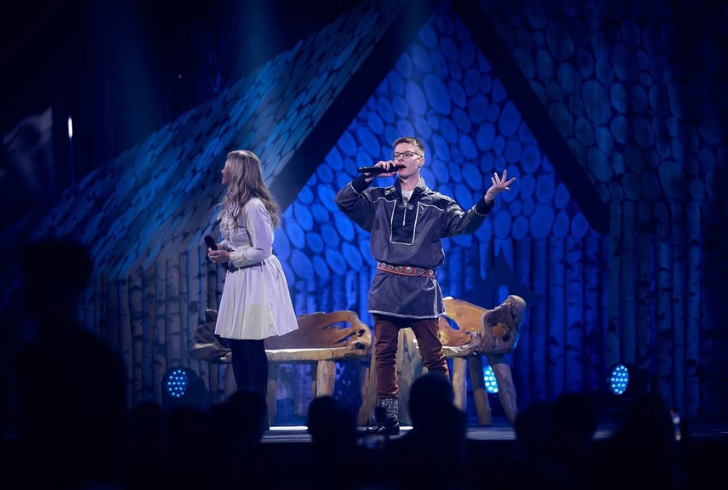Sámi Traditions and Hip-Hop Unite in Finland’s Arctic Circle Festival
In the northernmost part of Finland, where the Arctic Circle cuts through remote wilderness, something unexpected fills the crisp air—not just the scent of spruce and reindeer moss, but the rhythmic pulse of rap music.
The village of Utsjoki, located less than 30 miles from the Arctic Ocean, is a quiet place most of the year. But every summer, when the midnight sun refuses to set, it comes alive with a cultural shift—one where tradition meets contemporary sound, and the Sámi identity takes center stage in ways both old and new.
Music, Identity, and the Arctic Circle
At Loktafeasta, an open-air music festival hosted in Utsjoki, the energy stays electric even after midnight. That’s when Mihkku Laiti—better known by his stage name “Yungmiqu”—takes the stage. Under blue spotlights and the never-setting summer sun, Laiti performs in front of over 300 attendees. Some sing along, others dance, but all are immersed in an atmosphere that feels uniquely Arctic and undeniably current.
As a proud member of the Sámi community—Europe’s only recognized Indigenous people—Laiti raps in his native Sámi language, offering a raw and personal take on his heritage. His lyrics reflect daily life, cultural misunderstandings, and a deep connection to his roots, all with the beat of modern hip-hop.
From Traditional Garments to Streetwear

Instagram | @nbforumhq | Laiti raps to shift the view, showing Sámi life as real, evolving, and proud.
Laiti rose to national recognition after his appearance on “Talent Finland,” where he challenged norms by performing in gákti, the traditional Sámi clothing. These vibrant garments are often detailed with high collars, pewter embroidery, and bright plaits.
While gákti is a powerful symbol of cultural identity, Laiti has chosen to move away from performing in traditional dress to push a broader message—being Sámi isn’t defined by how one looks.
As he puts it, representation should reflect the diversity within Indigenous lives, not just romanticized snapshots of the past.
Who Are the Sámi?
The Sámi are Indigenous people traditionally from a vast region called Sápmi, which spans across northern Norway, Sweden, Finland, and parts of Russia. In Finland alone, about 10,000 Sámi live today, although many have moved beyond their ancestral lands.
Historically semi-nomadic, Sámi communities were known for herding reindeer, fishing, and practicing rich oral storytelling traditions. Yet, their history has also been marked by hardship. For generations, Sámi people endured forced assimilation policies—languages were banned, and cultural practices discouraged.
Today, there’s a renewed movement to reclaim and preserve Sámi identity. Finnish law now protects Sámi languages, though daily practice still varies widely.
Where Old Ways Meet New Tools
In modern Utsjoki, the age-old tradition of reindeer herding is still alive—but now it’s backed by GPS tracking, drones, and snowmobiles. The mix of heritage and innovation is part of what makes contemporary Sámi life so unique. It’s also what makes festivals like Loktafeasta such a powerful cultural moment.
At this event, traditional Sámi dress is worn with pride by many attendees, especially during performances. The crowd reflects a community that’s not only holding onto its identity but also redefining how that identity is expressed.

Instagram | @grshalan | Cultural symbols like herds take creative form as Sámi traditions inspire new public expression.
A Bilingual Celebration of Culture
Loktafeasta isn’t just about Sámi rap. The festival showcases a range of performances—from Finnish-language hip-hop to genre-bending acts like Jaakko Laitinen and Jouni J, a duo blending old-school tango with rap.
Their mix of Finnish folk influence and lyrical wordplay connects to centuries-old traditions of poetic storytelling, drawing a surprising line between Kalevala-era rhythms and today’s musical experiments.
The Power of Music Across Cultures
Though Utsjoki is worlds away from the Bronx, the birthplace of hip-hop, the cultural parallels run deep. The artists performing here aren’t copying global trends—they’re creating something personal, fusing local heritage with global beats. And the audience, rain or shine, stays until the last note, swaying in unison under the unending daylight.
As Jaakko Laitinen puts it, music has a way of connecting people. No translation needed. It builds bridges—between generations, languages, and worlds.
The Sámi story isn’t frozen in time—it’s evolving, expressed in rap verses, traditional clothing, modern tools, and midnight sunlit celebrations. As long as festivals like Loktafeasta exist, Sámi culture will continue to thrive, not as a relic, but as a living, breathing identity.
Whether through language, lifestyle, or sound, Sámi communities are reminding the world that their presence is vibrant, their stories authentic, and their future self-defined.